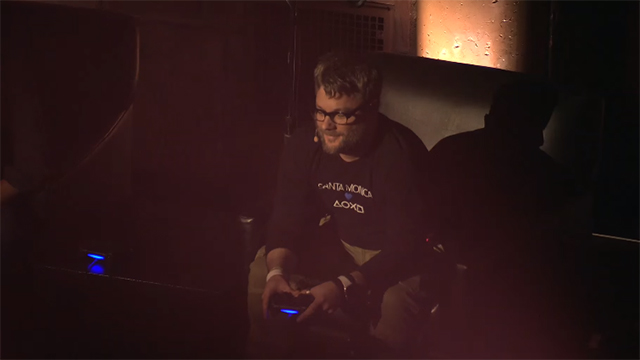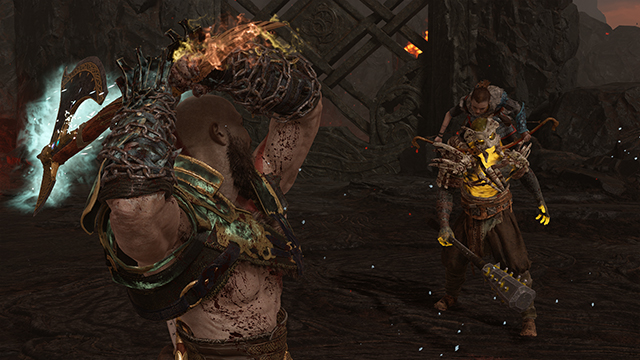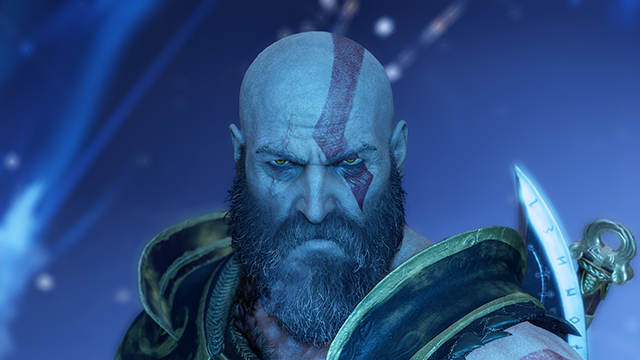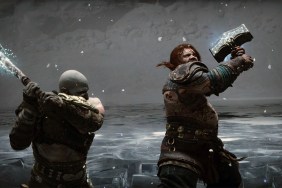It may be easy to look at a widespread Game of the Year winner like God of War and assume that it was a relatively smooth experience where everyone high-fived between mocap performances and coding sessions. However, reality is not so optimistic and even though God of War did go through a ton of rough patches, there were a few big ones that weren’t physical but mental. Director Cory Barlog is widely regarded as the figurehead of a team that was able to revive Kratos but despite the successful result, he had to overcome something more nefarious and conniving than Odin himself: doubt.
These mental obstacles started almost immediately when the project was just a sparkle in Barlog’s eye. Back in 2013, he came back to Sony Santa Monica to pitch a bold new vision for God of War. His initial pitch to Studio Head Shannon Studstill was filled with mostly vague words and grandiose arm gestures, which Barlog cites as theatrics he used to make up for actual substance as his ideas were just a skeleton in those early days.
His second pitch to Game Development Head for Sony Worldwide Studios America Scott Rohde was more than nonspecific commitments but slightly more specific PowerPoint slides. It took four weeks to cobble together but it was more fleshed out with comparisons to Star Trek and reiterating that it needed to continue Kratos’ story. Although, some of his points were harder to look back on since you sometimes want to say some cliché phrases to hook those with the purse strings in order to get funding for a game.
“Wave your arms, say it loud, and people will just scoff and go ‘Well, here you go,’” Barlog said as he gestured like he was handing money to an unnamed, expressive game developer.
Phrases like “own the action adventure genre,” “make a Game of the Year candidate,” and “making an interactive and immersive world” were three points that Barlog is embarrassed to think about now. And even though his team achieved the latter, he thought it was “total bullshit” at the time. They were big words meant to help coax Sony into getting behind the project. Confident, big words. But inside, Barlog was not as confident and began to partly yield to his self-doubt.
“Inside I was like ‘Yeah right. This is not gonna happen, but it will get people really excited,” he said.
God of Bore

The E3 2016 reveal demo embodied this uncomfortable feeling as Barlog didn’t know what this meant. Was it a logo? A quick clip? A trailer? A demo would have been the hardest choice so that’s what he picked. The game wasn’t even a known quantity and didn’t have all of its pieces together, which made it infinitely more stressful. E3 was so far away at that point that it seemed doable.
Barlog pinpointed the section of the game that he thought would hit all the check marks of an E3 demo: the end of the level inside the mountain. It was about in the middle of the game and it would have a big monster reveal at the end before it would cut. A classic E3 demo.
Part of this didn’t sit right wit Barlog. Something was off. But he sent the idea off to other members of the team and they signed off on it, which is something he chalks up to nice coworkers.
“There was always something inside of me that was saying ‘I don’t think this is very good,’” he admitted. “But to be honest, there is always something inside of me that is saying ‘this is no good and you suck.’ But I was going to ignore that.”
That doubtful inner voice didn’t get have its “told you so” moment until it became time to pitch the idea to marketing. Within five minutes, he was losing them. They were meandering on their phones, shifting in their seats, and generally not paying attention. Halfway through the pitch, he was thinking of way to evacuate despite how nice the marketing people were to his face. After that disaster, Studstill pulled him aside and validated his original reluctant thoughts: this pitch wasn’t exciting and too similar to the typical E3 demo.
Round two, which is what became the final E3 demo, went much more smoothly, proving that his initial doubt was correct in the end. Although the pitch wasn’t done. Barlog haphazardly threw out a joke saying that composer Bear McCreary should perform live next to the demo. And the marketing people took this and ran with it and brought it back up weeks later even though it was a throwaway gag that Barlog had completely forgotten about. He tried to play it cool despite his inner freakout.
“Inside, I was like ‘Fuck, fuck, fuck, fuck, fuck, fuck,’” he said. “But outside, I was like ‘Cool! Let’s do this.’”
God of War‘s time to shine

He had a good reason to be perturbed because the game was still being built. Its art direction wasn’t nailed down. The lighting was only around 40 percent complete. Combat and enemies were in limbo. This was the game’s huge debut and a lot riding on this studio that had just canceled an unannounced game and released a disappointing God of War prequel five years prior.
“We were trying to take an inaugural flight in a plane while we were building the plane and also drawing the blueprints of the plane as it was taking off,” he said, describing how stressful this whole situation was.
As he was preparing for his live demo for a game that was still being constructed, the team was essentially putting in bowling bumpers so he wouldn’t go off course and mess the whole thing up. But there were still plenty of opportunities for him to take a wrong turn, perform the incorrect combo, or generally beef it in some unforeseen way that his months of practice couldn’t completely prevent.
The weeks leading up to the big show gave ample time for his cynical, doubtful inner voice to shake him. “You’re gonna mess this up” along with all the potential goofs were continually playing in his head. This wasn’t helped during the car ride to the event, as the in-car camera person was constantly asking Barlog about screwing and what he would do if that happened. And rehearsals made this specter of failing live all too real.
Technical glitches can sometimes plague an E3 demo and, while it’s not the end of the world, companies do have backup plans. In this instance, there was a backup console running the game and then, if that had crapped out, Barlog would have to apologize to the whole crowd and those at home. Rehearsing that apology made failure seem too real and only applied more pressure into Barlog’s increasingly pressurized skull.
As the moment arrived and he was getting his lav mic set up, Barlog’s anxiety and negative thoughts began to slowly overtake him to the point where he claims he forgot literally everything he was supposed to do in the demo. He kept it inside of him in fear that telling someone would make it a terrifying reality.
But that didn’t happen. The live demo went well. It didn’t crash, he didn’t die in the game or in real life, and the game won a ton of E3 awards. God of War looked awesome and that showing did a hell of job reinforcing that.
Coming full circle

Although doubt permeated much of the game’s development, that E3 demo encapsulated that self-doubt in a poetically succinct way. Impostor syndrome and thinking everything you do and say is bad were walls that kept leading to, well, more walls. The radically different take on the series was already a hard sell for the team and Barlog had to convince them that he was right in lieu of his own quiet skepticism.
But that quiet skepticism also came with aspects that he knew he was right about like having Atreus in the game along with the no-cut camera. Atreus spent a good portion of the game’s development on the chopping block and the camera was a huge, painful undertaking, but, despite the constant resistance, Barlog insisted that these had to be in the game.
Barlog reiterated that the doubtful voices inside your head and of your team are wrong and that you shouldn’t listen to them. But sometimes, those voices are right. Doubting the first scrapped E3 demo was right because it was a trite, mediocre idea. Doubting the new direction for the game, however, was wrong, as shown by the game’s impressive award cabinet and sales numbers. Given the fickle nature of doubting, Barlog advised the audience to be honest and trust themselves and the people closest to them. It’s tricky to know when to ignore the skeptical inner and outer voices and when to embrace them but learning that tough skill can pay dividends.











